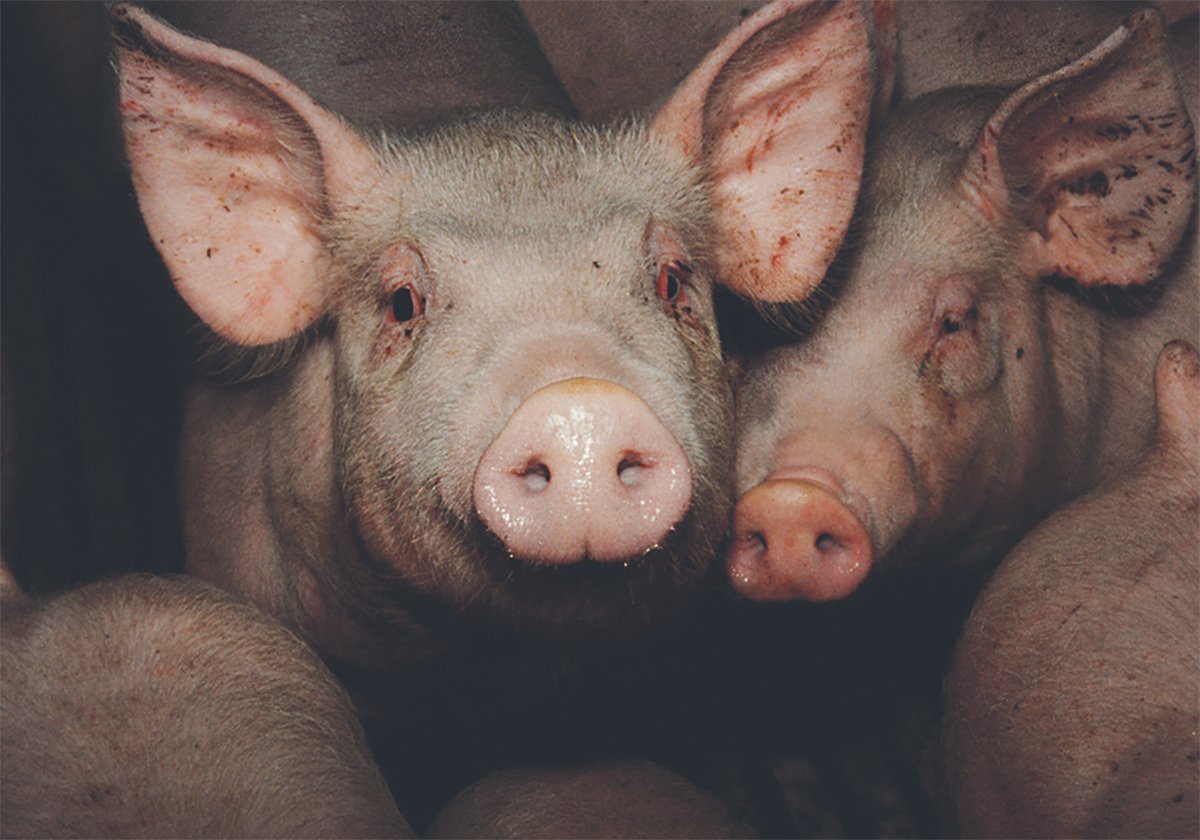A horse’s painful bellyache may be caused by internal parasites.
Olds, Alta., veterinarian Corinne Eliason said a variety of worms and fly larvae can infest horses and lead to serious health problems.
“If you aren’t deworming your horses, they likely have them,” she said at the Calgary Acreage Lifestyle show March 19.
Horses commonly pick up pests while grazing where eggs and larvae are attached to a single blade of grass or a drop of water. Once inside, they work their way through the horse and attach themselves to the stomach or intestinal lining. The horse eventually passes a new generation of eggs or larvae in its manure and the cycle repeats.
Read Also

The Western Producer Livestock Report – October 30, 2025
Western Producer Livestock Report for October 30, 2025. See U.S. & Canadian hog prices, Canadian bison & lamb market data and sales insights.
“The larvae inside a horse’s gut may or may not migrate around various organs before maturing into male or female worms,” she said.
Roundworms are a pencil shaped parasite.
The ascarid type produces a round-shaped egg with a hard outer shell that can survive at that stage for many years. It affects horses, dogs, pigs and people. This large roundworm is cream coloured and can grow up to 30 centimetres in length. It lives in the small intestine, robbing the body of nutrition, but not blood. The larvae can travel to the liver, heart and lungs causing severe damage. The eggs are laid in the intestine.
This worm is not normally found in mature horses that appear to develop immunity as they grow older.
Horses infected with this worm type have a pot belly, poor hair coat, some coughing and decreased growth.
The strongyle egg is oval shaped and grows into a worm about two to five cm long. The worms can be seen in the manure.
There are about 40 strongyle type worms that feed on the mucosa of the gut. The larval stage is the most troublesome because they attach themselves to the inner intestinal lining.
“The larvae blocks off an important artery in the abdomen and can cause colic in horses that have not been dewormed,” Eliason said.
The gut tissue can actually die from lack of blood flow. Some of these larvae may migrate to the liver. These are not commonly seen anymore because of good deworming products on the market.
Annoying problem
Pinworms are not as serious to horse health but can cause annoyance.
The female pinworm can reach 15 cm in length while the male is about one cm long and dies after mating. They lay their eggs around the rim of the anus, causing itchiness and irritation. Some tail head hair may be rubbed off as the horse rubs and scratches the area. The worms finally fall off and get taken up again as horses graze.
Tapeworms were not assumed to be a problem until about five years ago in Western Canada.
A tiny pasture mite is required to pass these on when the horse takes up the mite with grass. These are not harmful to the horse but the tapeworm has to live in the mite as part of its life cycle.
Once the horse has swallowed the mite, the developing tapeworm attaches with four suction type suckers in the cecum and steals nutrition from the horse.
This causes irritation and keeps the gut from moving along properly. It could pull the intestine over itself like a rolled up sock.
The horse eventually passes eggs in the feces where a mite consumes them.
In Canada, tapeworms grow to 10 cm in length but in the United States some have been found up to a metre long.
External parasites
Flies are external parasites. Face flies swarm around moist parts like the nose, eyes and mouth, irritating the horse. These are smaller than houseflies.
Horse flies are large and can bite viciously. They lap up blood and can spread swamp fever as they move from horse to horse.
Stable flies are about the same size as houseflies and can inflict painful bites.
Bot flies deposit creamy coloured eggs on the legs, nose or mouth. These are sticky and hard to remove. As the horse grooms itself, it can swallow the larvae or these migrate in through the nose or mouth. They spend the winter in the stomach and attach themselves to the intestine and rob nutrition. They pass out in the spring and the life cycle restarts.
“If you haven’t dewormed your horse, you are guaranteed your horse has bots,” Eliason said.
Sucking and biting lice but are not normally a major problem in horses. Lice tend to be a winter problem with a life cycle of about three weeks.
Biting lice move around under the skin. They cause itching, hair loss and the coat is scruffy or greasy in appearance.
Mites are not common but may appear in winter.
The choroptic mite can cause mange and may start at the lower limbs along the pastern. Signs include irritation, itching and foot stamping. They may also appear in the tail head area.
Sarcoptic mange is less common and can affect many different species such as coyotes. Female mites dig tunnels in the skin, causing pain, skin damage, scabs and crusts.
To diagnose parasites, veterinarians need to see fresh manure samples. The samples can be placed in a plastic zip lock bag and refrigerated until they are delivered for examination.
A number of products such as ivermectin or moxidetin are effective deworming treatments. It is important to read labels to see which parasites they kill and at what life stage the application is most effective.
Manure should be checked periodically for the presence of worms to ensure no chemical resistance has developed.
Horses living in a small area may require more treatments because they may be forced to eat grass closer to manure than they normally would.
Manure should be removed from small paddocks weekly and pastures should be fertilized to encourage lush grass growth so horses are not forced to graze close to the ground. Do not spread manure in wet conditions because moisture helps parasites grow.















